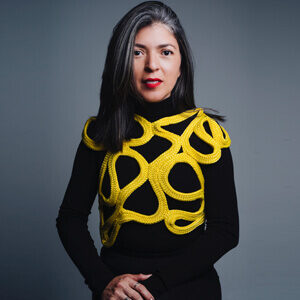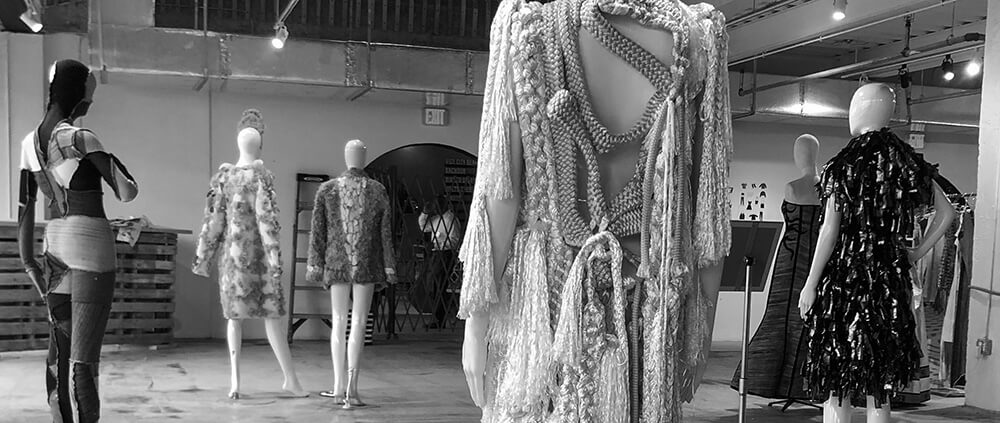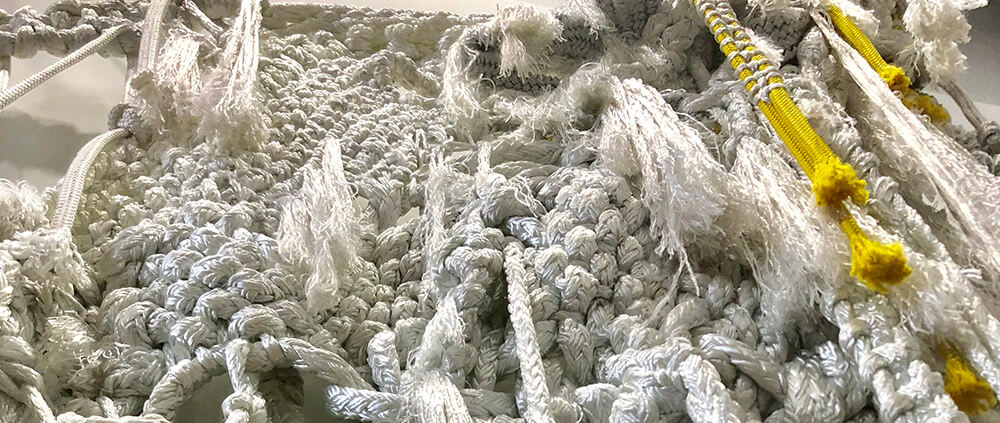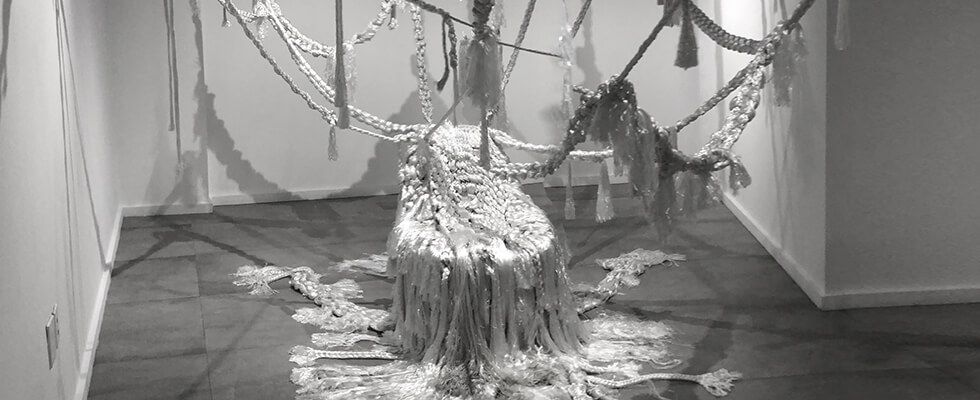
Lisu Vega (b. Miami, 1980) is a multidisciplinary artist and a current member at the Miami-based Laundromat Art Space Residency Program. Her work explores the notion of memories through the allegory of “weaving”, both literally through the materials and metaphorically as a process. Trained as an experimental graphic designer with vast experience in the fashion industry, Vega is constantly bridging the gap between handmade and digital media. The ancient weaving knowledge from her Wayuu lineage has allowed Vega to define her artistic practice in terms of sustainability while exploring the relevance of traditional systems in a contemporary context. Her work has been exhibited throughout the United States, Europe and Latin America. Recent exhibition highlights include the renowned “Innovative Costume of the 21 century: The Next Generation” at the Bakhrushin Museum in Moscow. Vega currently lives and works in Miami, Florida and her work will be on view at the Coral Gables Museum, Florida in December 2019.
“A body that turns into a canvas and lets itself be seduced by the stain of the rope; a sculptural piece, which is an extension of my artistic work.”
Lisu Vega—-
Miami, USA

DEEP SOUL Installation
2019
Crochet of recycled rope irregular connections
MOS – Museum of Sustainability

Lisu Vega
Lisu Vega
Born in Miami.
Born in Miami, raised in Maracaibo, Venezuela / Lives and Works in Miami, Florida U.S.A.
SELECTED SOLO AND GROUP EXHIBITIONS
2020
Contemporary Jewelry Exhibition at Penland Gallery. N.C.
2019
Invited Artist.
Crossing Culture at Pinta Art Fair Miami
For Now: Contemporary Venezuelan Art of Miami Diaspora, Coral Gables Museum.
Innovative Costume of the 21st Century: The Next Generation, Bakhrushin Museum, Moscow, Russia. Mother I Can See Myself in Your Eyes, Concrete Space – Doral Contemporary Art Museum, Miami, Florida.
Fashion Art Exhibition, Appleton Museum, Ocala, Florida.
Museum of Sustainability Pop-up Exhibition, Curated by LAS Project, The Citadel, Miami, Florida.
El Cuerpo de la Obra, Solo Exhibition, Laundromat Art Space, Miami, Florida.
Click below to download full CV

Statement
Tejido y memoria:
Lisu Vega
Lisu Vega is a multidisciplinary artist working between sculpture, installation, and fashion. Her work has been shown nationally and internationally, and it explores issues that are close to Vega’s heart and concerns, such as sustainability, migration, memory and identity. Vega’s commitment to the environment fuels her experimentation towards the goal of a zero-waste practice.
She has a degree in Experimental Engraving which was her starting point to move out of the canvas and to go to tri-dimensional work. For a long time, she has explored the relationship between fiber and the human body as an expression vehicle. Her interest in her own identity brought her to move that exploration beyond the body to fill the rest of the space.
She has found in weaving a vehicle to connect with her memories and her ancestors. In her most recent work, that connection guides Lisu’s hands to weave the rope into sustainable contemporary art pieces, that expand into the space in a playful, sometimes mysterious, combination of shapes and shadows. This intensive physical nature of the work serves as a catalyst to her emotions of loss for what has been inevitably left behind, simultaneously creating a bridge to her past and a strong message of hope for the future.
Lisu grew up in Venezuela, and currently lives and works in Miami. She is a resident artist at Laundromat Art Space in Little Haiti.
Félix Suazo
Curator
On the tightrope
Lisu Vega
At first sight, Lisu Vega’s activity is divided into two large work centers. On one side the design of clothes and on the other one, its sculptures and installations made with ropes. However, when viewed carefully, there are very fluid crossings between the two processes, at the base of which there is always a concern for the recycling of materials and sustainability. Another aspect common to design and artwork is its spontaneity and experimental character. Whether as a functional object or as an artistic device, her work with fabrics, ropes and images refers to the body, identity and memory.
However, the relationship between art and fashion constitutes a point of extreme tension in her proposal. On the side, there is the question of definitions: what is art? What is fashion? In the art world, fashion prejudice persists as something frivolous and short-lived. From the field of fashion, prejudices are manifested before a “rare” product that lacks “ornaments” and does not attach to the precepts of “haute couture.”
They are unique pieces that try to say something; that arises from a narrative that although it originates from the idea of the body, they do not follow a “pattern”. It is about the dress as a language of cultural differentiation and not as a unfirming element. Wearing or appreciating a piece by Lisu Vega does not imply being fashionable but recognizing a space of subjective and political distinction. After all, fashion as an industry based on obsolescence is not the same as fashion as a cultural experience.
Both on the catwalk and in the showroom, her proposal tries to capture personal consultations and experiences to share, linked to everyday anxieties, ancestral myths, environmental challenges or political problems. Her work speaks of simple things like “what clothes to wear” and complex issues like “what to do about this or that.”
For Vega the rope has so many different meanings. When used in a necklace it works like a “hug”, when used for a dress acquires the consistency of a “second skin”, when used in sculpture or installation it can be an object, a root or a phytomorphic cavern. Seen this way, the rope is part of a language that serves to “draw” spaces, to “gather” inert organisms and bodies, to “weave” connections and also to “tie” memories. In any case, the artist prefers the material dominates and dictates the way. According to her, “working with ropes is a process of strength and caresses.”

